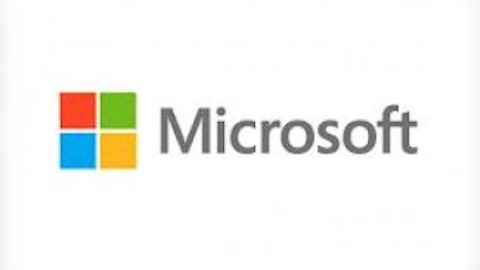Earlier this month Sprint-Nextel became Sprint Nextel Corporation (NYSE:S), with Softbank completing its acquisition of 72% of the shares at $7.65/each.
The remaining shares are now worth under $6, following announcement of yet-another loss, yet Deutsche Bank has a “buy” rating on the stock.
Are they crazy? Let’s find out.

Sprint’s Strategy and Assets
What Sprint Nextel Corporation (NYSE:S) has now that it didn’t have before is a clear strategy. It aims to build out its LTE capacity, using as much frequency as it can get to add as much bandwidth as it can. Then it means to sell that bandwidth at prices lower than AT&T Inc. (NYSE:T) and Verizon Wireless, backed by a big ad campaign that positions it as a legitimate third choice for consumers.
This is what worked well in Japan. After Softbank bought what was then Vodafone Japan, it launched a price war against KDD and NTT which, within a few years, had it as the number one network in the market, a position it still holds.
Sprint Nextel Corporation (NYSE:S) will have plenty of frequency with which to execute its strategy, having completed the acquisition of Clearwire just before the Sprint Nextel Corporation (NYSE:S) deal closed. These deals were seen as crushing the ambitions of Dish Network, which had tried to buy both companies. Yet DISH stock today is valued more highly than it was when the deals closed.
What’s going on?
Capital Requirements
While Sprint Nextel Corporation (NYSE:S) spent $22 billion putting the new American company together, it now needs another $16 billion to rebuild its frequencies into a single digital network.
The $16 billion will mainly go to base stations, $8 billion/year. Sprint says spending will slow after that, but it will still be running at a $6 billion/year rate. As part of all this Sprint Nextel Corporation (NYSE:S) said it intends to build a research facility in Silicon Valley. This could result in Sprint building its own base stations from parts, which would save considerable money.
But we’re still talking about a lot of money.
The average digital phone subscriber now pays about $56/month for service, but only half those subscribers are using smartphones. Verizon Wireless says new smartphone subscribers wind up paying another $15/each for data service, so the average revenue per user (ARPU) from smartphone users comes to $70/month, or $840/year. You can’t expect that increase if a price war breaks out, as Sprint insists it will, so a smartphone subscriber is worth about $800/year.
How many $800/year subscribers does it take to lift $8 billion/year in capital? Two million gives you $1.6 billion in revenue, enough to tote that note and pay for some of the marketing Son will find necessary. Of course, before we can talk about growth we have to see Sprint make up for its current subscriber losses – 1 million in just the last quarter – which will increase as it sunsets its old Nextel network to get the spectrum it needs for growth.
Even assuming a best-case scenario, you spread the profits of that across a $17.76 billion market cap with 3 billion shares and it starts to look pretty thin, at least for a few years. Deutsche Bank’s positive call is based on a best-case scenario, and their price target for the stock is relatively modest. Buy for a small profit a few years from now?
Better Ways to Play
If you care about yield, AT&T Inc. (NYSE:T) offers you a much better way to play.
AT&T is basically a yield stock. You buy it on dips for dividends. You buy it for income.
The current dividend of 45 cents a share yields a fat 5% spread over a year. The price of the stock doesn’t move around much – a low this year of $33, a high of $39 – but you wouldn’t expect that when you’re buying yield.
It takes about $2.5 billion in earnings each quarter to make that dividend, and AT&T usually makes that nut, except it’s time to buy the iPhones, which it had to do in the fourth quarter of last year. That $5 billion hit to expenses turned a normal profit into a fat loss. But it comes back in the form of two-year service contracts, so the investment is a big profit center.
The problem with AT&T is that it’s still stuck with unprofitable wired assets. Its efforts to boost capacity with uVerse have done nothing for the bottom-line, and Google is now eating into its long-distance digital revenues. The company’s low rates of investment mean it’s basically eating itself alive inside, so you won’t be able to stick this stock in the back of the closet and ignore it. At some point you’re going to have to sell, as you did with newspapers.
Another way to play the growth of mobile data is with Apple Inc. (NASDAQ:AAPL). Here you’re looking at a 2.68% yield, but some shot at capital appreciation. It can afford that dividend more than seven times over, and the company might still excite with something new. Given that it’s currently trading at a P/E of 11, that’s not bad business. Given that the company continues buying back stock, and has cut the share count by over 30 million this year alone, it’s hard to see the price going down much.
The only debt on Apple Inc. (NASDAQ:AAPL)’s balance sheet comes from that stock buyback, and the deal is profitable for Apple – that’s very low-cost debt which gives earnings per share (EPS) a regular boost. And even if it fails to improve much on last year’s results,you’re looking at $30 billion in cash flow every year going forward, with service revenues gradually picking up the slack from falling hardware revenues.
The Foolish Bottom Line
I’m biased. I’m long Apple Inc. (NASDAQ:AAPL). I see it as a $500 stock by the end of the year, and a solid value play. If you really, really need income, AT&T Inc. (NYSE:T) is your best bet.
Sprint, however, is a speculation. If Son does as well here as he did in Japan, if he turns the current market share map upside-down, you will be a winner here. But I’d wait a little bit, until the coming costs dawn on the timid and the stock goes down further, before jumping in. It’s a casino bet, with odds that are better than the slots but not as good as the table games. If your money can take its time it may well be rewarded. Good luck.
The article Sprint Story About Time-Value of Money originally appeared on Fool.com and is written by Dana Blankenhorn.
Dana Blankenhorn owns shares of Apple. The Motley Fool recommends Apple. The Motley Fool owns shares of Apple. Dana is a member of The Motley Fool Blog Network — entries represent the personal opinion of the blogger and are not formally edited.
Copyright © 1995 – 2013 The Motley Fool, LLC. All rights reserved. The Motley Fool has a disclosure policy.





